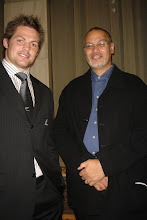Potatoes were introduced to Nga Puhi in 1794, becoming a key staple with better food value for weight than kumara, easier to cultivate and store, and - unlike kumara - tillable by slaves and women. The result was a logistical revolution; potatoes effectively fuelled the long range taua that made the 'Musket Wars' so different from any fighting that had gone before. Slaves brought back from these massive raids were put to work tending potato patches, freeing up labour to create even larger taua.By the 1830s, European blankets, foodstuffs and consumer goods were well distributed through Maori society. By this time most toa had a flintlock musket ngutu parera` - sometimes Tower flintlocks, more often the cheap Birmingham built 'trade muskets' sold by unscrupulous merchants in spite of missionary protests.` Others had the more lethal tupara, the double-barrelled shotgun.
Matthew Wright 'Two Peoples, One Land'




OMG!!
ReplyDelete